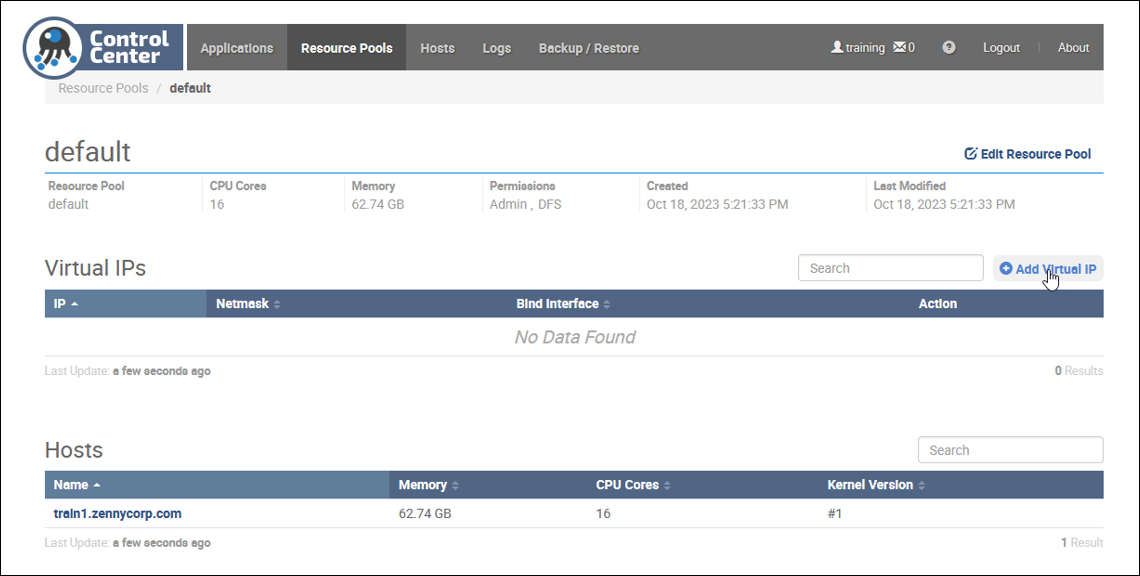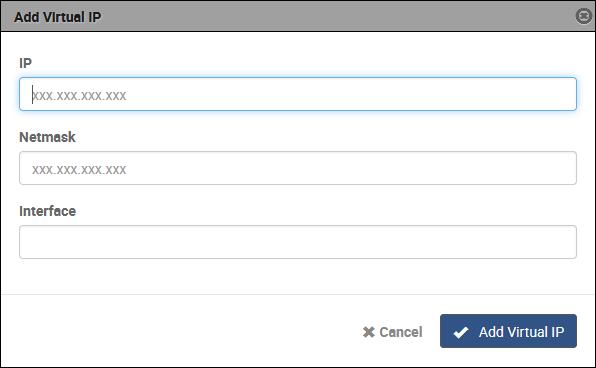Optional: Assigning a virtual IP address to a resource pool
The zentrap and zensyslog services are designed to receive data from devices in your environment at a specific IP address. Typically, the address is assigned to a specific host. However, if the host fails, then no data is received.
To avoid this issue, you can assign a virtual IP (VIP) address to a resource pool, and then Control Center can create a VIP interface on any host in the pool. As a best practice, use a VIP with resource pools that include Resource Manager collection services. Create a VIP for each of the services, zentrap and zensyslog, that you are using in that resource pool.
VIP address management relies on Gratuitous Address Resolution Protocol (ARP) to announce new hardware, so your network must support this method using the VIP. However, Amazon Web Services (AWS), Azure Cloud Services, and Google Cloud don’t support Gratuitous ARP. Therefore, VIPs do not work on collector pools hosted by AWS, Azure, and GCP.
To work around this issue, try one of the following methods:
- Host a pool outside of AWS, Azure, and GCP for trap/syslog collection.
- Send traps to each of the individual collector IP addresses.
Assign a VIP address to a resource pool
Be sure to meet the following requirements before performing the steps in the procedure.
Prerequisites
-
You need an unused IPv4 address in the same subnet as the other hosts in the resource pool that you want to modify. To avoid conflicts, ask your networking specialist to assign or reserve the address.
-
All of the hosts in the resource pool must have the same network interface names. For additional information about network interface names, contact Zenoss Support.
Perform the following steps:
- Log in to the Control Center browser interface.
- At the top of the page, click Resource Pools.
- In the Resource Pool column of the Resource Pools table, click the name of the resource pool that you want to modify.
-
On the right side of the Virtual IPs table, click Add Virtual IP.
-
In the Add Virtual IP dialog box, specify the virtual IP.
-
In the IP field, enter an IPv4 address.
The address must be in the same subnet as the other hosts in the current resource pool.
-
In the Netmask field, enter an IPv4 subnet mask.
The mask must match the range of addresses in the current resource pool.
-
In the Interface field, enter the name of the network interface that is used on all hosts in the resource pool.
-
At the bottom of the Add Virtual IP dialog box, click Add Virtual IP.
-
When you configure devices to send syslog or SNMP trap messages, use the virtual IP address assigned to a resource pool. For more information, see SNMP trap forwarding and Syslog message forwarding.

